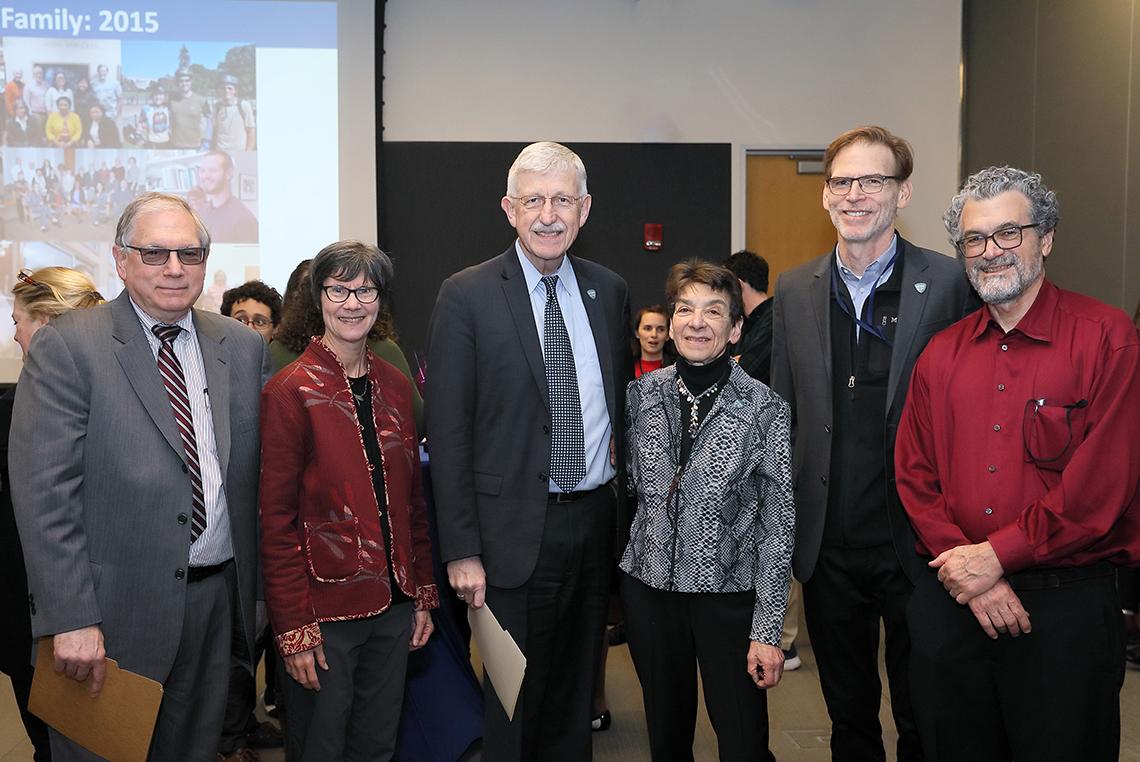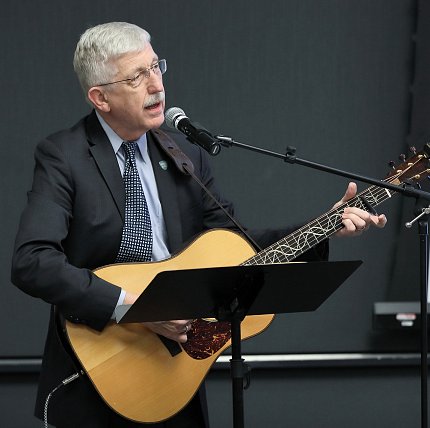NIDCR Director Somerman Celebrated Upon Her Retirement

Photo: Chia-Chi Charlie Chang
A song, a surprise video and a story about a bear marked the retirement celebration for Dr. Martha Somerman, who stepped down as director of the National Institute of Dental and Craniofacial Research on Dec. 31 after more than 8 years of service. Speakers at the party, which was held recently in the Porter Neuroscience Research Center, highlighted some of Somerman’s contributions to her field.
“We can definitely say that Martha is not a dabbler, nor has she ever been,” said NIH director Dr. Francis Collins. “She has advanced the science and worked tirelessly on behalf of the dental research community and a whole generation of dental professionals.”
Somerman is internationally recognized for her expertise on the regulators that control development of dental and craniofacial tissues; her intramural lab has identified genes and associated factors that promote periodontal regeneration. Among her many accomplishments at NIH was establishing the Dental, Oral and Craniofacial Tissue Regenerative Consortium “to get research out of the lab and into the clinic and, along the way, advance the exciting and promising field of regenerative medicine,” said Collins.
Dr. Lawrence Tabak, NIH principal deputy director and NIDCR’s acting director as of Jan. 1, described Somerman as an integrator, “one who understands multiple specialties and how they influence each other, and can foster these collaborations.

Photo: Chia-Chi Charlie Chang
“Martha’s NIDCR 2030 priorities have set a course for a future where dental, oral and craniofacial health and overall health will be better integrated,” added Tabak. “She recognizes and encourages all of us to see how the well-being of our oral cavity links to any number of medical conditions that previously appeared to be unrelated.”
Collins and Tabak noted that Somerman has been deeply committed to training the next generation of oral health researchers at every level of their careers and to pushing for greater diversity in the scientific workforce. “Not surprisingly, a very large number of Martha’s former trainees have gone on to enormously successful careers around the world,” said Tabak.
Collins’s song for Somerman—he often writes one for retiring directors—drew inspiration from Crosby, Stills, Nash & Young. To the tune of Teach Your Children, Collins sang:

Photo: Chia-Chi Charlie Chang
“Martha taught her students well, and you can tell,
They learn to aim high.
She mentors, she opens doors, their science soars,
She takes them so high.”
Somerman’s penchant for running—Tabak said it was hard to keep up with her—was the inspiration for the surprise video that followed Collins’s remarks. Staff from many of NIDCR’s divisions and Somerman’s lab participated in some variant of running on the video to honor their outgoing director.
And about that bear? Collins regaled the audience with a little-known fact about Somerman. When she was dean of the University of Washington School of Dentistry, one of her largest, hairiest patients was treated at Seattle’s zoo. Edwina, a Malayan sun bear, broke a tooth and needed a root canal. “Martha was part of the team that treated her,” said Collins.
In the coming year, while Somerman ensures her students and mice have soft transitions from her NIH lab, she “will continue to serve the human community, but I hope she will volunteer to help the National Zoo with the dental care of its residents,” said Collins. “They will be fortunate bears indeed.
“Here at NIH, Martha has served with great creativity, always seeking to make something new,” concluded Collins. “We are in your debt.”
